#AfricaTourism
Text
AFRICAN MART.
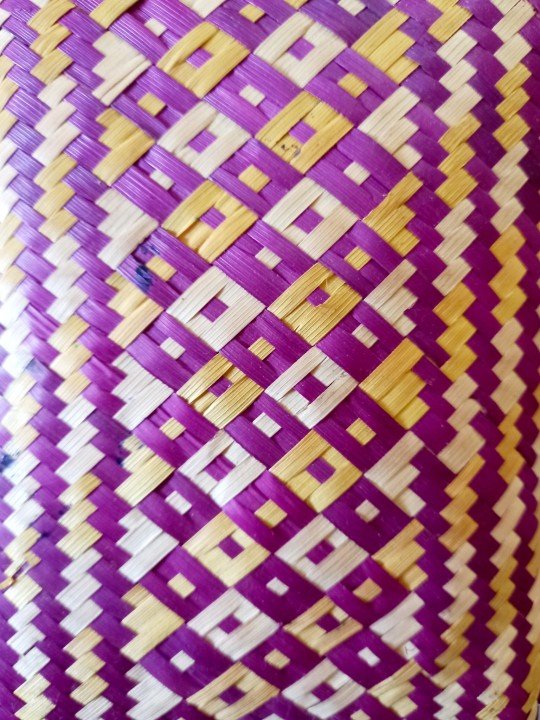
5 notes
·
View notes
Text
Unlock the Wonders of Kenya for Your Clients! 🌍
Delve into the enchanting beauty of Kenya and elevate your clients' travel experiences with these extraordinary destinations. 🏞️
Mt Kenya:
Africa's second-highest mountain, boasting UNESCO World Heritage Site and Biosphere Reserve status. 🏔️
Lake Turkana:
Amid deserts, discover the jade-and-turquoise mirage of Lake Turkana. 💦
Kakamega Forest National Reserve:
Lace up and explore Kakamega Forest, a haven for biodiversity. 🌳
Watamu:
Nestled on Kenya's Indian Ocean coast, Watamu offers pristine beaches, translucent waters, and a rich cultural heritage. 🏖️
Masai Mara:
Experience the iconic grasslands, acacia trees, and witness the breathtaking Great Migration. 🦓
Amboseli National Park:
Home to big-tusked elephants against the backdrop of Africa's best views of Mt Kilimanjaro. 🐘
Nairobi National Park:
Nairobi's wildlife oasis bordering the capital city. Witness abundant wildlife against the backdrop of city skyscrapers. 🌆
Diani Beach:
Diani Beach offers a flawless stretch of white-sand paradise, an ideal base for combining surf with safari. 🏝️
Kisite Marine National Park:
Explore the vibrant marine life of Kisite Marine National Park, renowned for colorful diving and snorkeling. 🐬
Mzima Springs:
An oasis in Tsavo West National Park producing 660 million gallons of fresh water daily. 💦
Curate unparalleled itineraries and let Kenya's diverse landscapes be the canvas for your clients' unforgettable journeys! 🌅
Discover more: https://africatourismconnect.com/africas-most-sought-after-destinations/crafting-irresistible-travel-packages-for-kenya/
#KenyaUnveiled#AfricanWonders#KenyaAdventures#ExploreKenya#DestinationKenya#Kenya#KenyaTourism#AfricaTourism
0 notes
Text
Discover the Enchanting Beauty of Africa: A Journey into the Wild
Africa, a vast and diverse continent, captivates travelers with its breathtaking landscapes, rich cultural heritage, and extraordinary wildlife. From the iconic savannahs of East Africa to the ancient wonders of North Africa, and the vibrant cultures of West Africa to the untamed wilderness of Southern Africa, Africa offers an unparalleled travel experience. In this comprehensive guide, we delve into the diverse facets of Africa, highlighting its remarkable destinations, cultural treasures, wildlife encounters, and practical travel tips. Join us on this journey of discovery beautiful places to visit through the enchanting lands of Africa.
1: Discovering Africa's Landscapes
1.1 The Serengeti: https://www.serengeti.com/
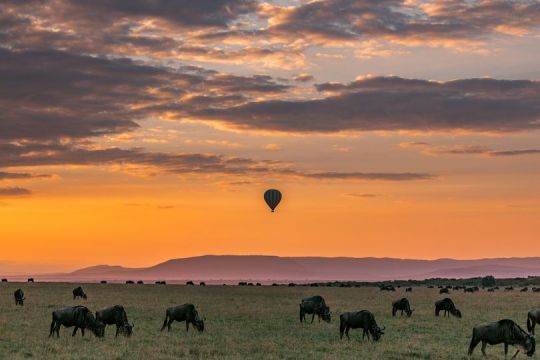
A Safari Haven in East Africa The Serengeti National Park in Tanzania is a wildlife enthusiast's paradise. Spanning over 14,000 square kilometers, it is home to the iconic Great Wildebeest Migration, where millions of wildebeest, zebras, and other herbivores cross the vast plains in search of greener pastures. Visitors can witness this awe-inspiring spectacle and observe the predators, such as lions, cheetahs, and hyenas, in their natural habitat.
1.2 Majestic Mount Kilimanjaro:https://www.kilimanjaroparktanzania.com/

Conquering Africa's Rooftop Mount Kilimanjaro, standing tall at 5,895 meters, is the highest peak in Africa. Embarking on a trek to its summit is a bucket-list adventure for many travelers. The journey takes you through diverse ecosystems, from lush rainforests to alpine meadows, culminating in a challenging climb to the snowy summit. The breathtaking views from the top make every step worthwhile.
1.3 The Okavango Delta:https://www.okavangodelta.com/
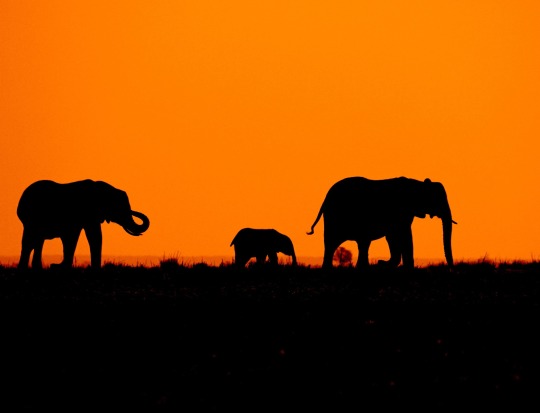
A Natural Oasis in Botswana The Okavango Delta, located in Botswana, is a unique and vibrant ecosystem. This vast inland delta is formed by the Okavango River, attracting a myriad of wildlife. Explore the delta by traditional mokoro (dugout canoe) and glide through the winding channels surrounded by reeds and water lilies. Encounters with elephants, hippos, and a variety of bird species create unforgettable moments.
1.4 The Sahara Desert:https://www.britannica.com/place/Sahara-desert-Africa

Exploring North Africa's Endless Sands The Sahara Desert, spanning across several African countries, is the world's largest hot desert. It offers a mesmerizing landscape of towering dunes, vast plains, and ancient caravan routes. Experience the desert's magic by embarking on a camel trek, camping under the starry sky, and witnessing the ever-shifting sands that create a surreal atmosphere.
1.5 The Drakensberg Mountains:https://www.britannica.com/place/Drakensberg
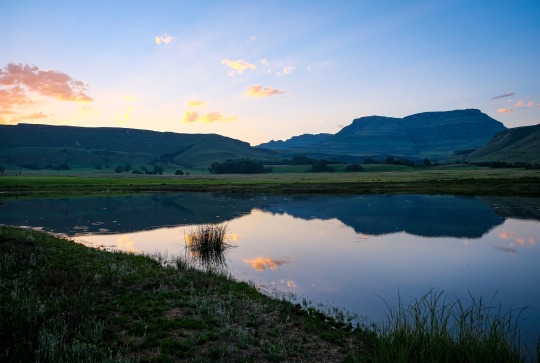
South Africa's Alpine Splendor The Drakensberg Mountains in South Africa are a haven for outdoor enthusiasts and nature lovers. With its jagged peaks, lush valleys, and cascading waterfalls, this mountain range offers breathtaking hikes and scenic vistas. Explore the uKhahlamba-Drakensberg Park, a UNESCO World Heritage Site, and discover its rich biodiversity, rock art, and dramatic landscapes.
2: Unveiling Africa's Cultural Heritage
2.1 Ancient Egypt: https://www.britannica.com/place/ancient-Egypt

Exploring the Pyramids and Temples Ancient Egypt, with its fascinating history, is a treasure trove of archaeological wonders. Visit the Great Pyramids of Giza, the Sphinx, and the temples of Luxor and Karnak to unravel the secrets of the pharaohs. Marvel at the intricate hieroglyphics, explore the ancient tombs in the Valley of the Kings, and cruise along the Nile River to immerse yourself in Egypt's captivating past.
2.2 Marrakech:https://www.visitmorocco.com/en/travel/marrakesh

A Glimpse into Moroccan Traditions Marrakech, the vibrant city in Morocco, offers a sensory journey into the country's rich cultural heritage. Lose yourself in the maze-like streets of the medina, where bustling souks offer a kaleidoscope of colors, scents, and sounds. Explore architectural marvels like the Koutoubia Mosque and the Bahia Palace, and indulge in the flavors of Moroccan cuisine, such as tagine and mint tea.
2.3 Timbuktu:https://www.britannica.com/place/Timbuktu-Mali
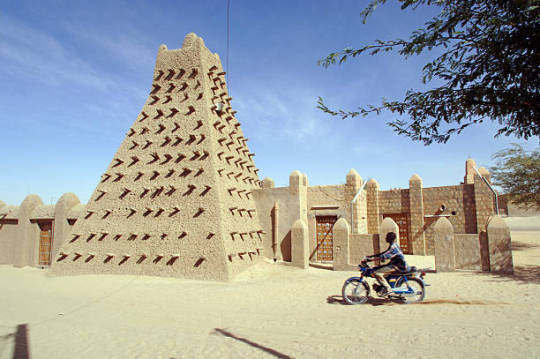
Tracing the History of the Sahara Timbuktu, located in Mali, holds a legendary status as an ancient center of trade and learning. It was a key hub along the trans-Saharan caravan routes and played a pivotal role in the exchange of goods, knowledge, and culture. Visit the historic mosques and libraries, witness the impressive mud-brick architecture, and gain insights into the intellectual legacy that shaped this remote desert city.
2.4 Lalibela:https://whc.unesco.org/en/list/18/
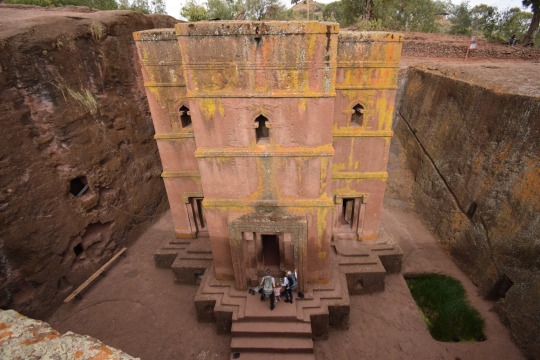
Ethiopia's Rock-Hewn Churches Lalibela, nestled in the Ethiopian highlands, is renowned for its awe-inspiring rock-hewn churches. Carved out of solid rock, these monolithic structures are a testament to the architectural brilliance of the past. Explore the interconnected churches, each with its unique design and religious significance, and immerse yourself in the spiritual atmosphere of this UNESCO World Heritage Site.
2.5 Cape Coast:https://www.britannica.com/place/Cape-Coast

A Journey into Ghana's Slave Trade History Cape Coast, located on the coast of Ghana, holds poignant reminders of the transatlantic slave trade. Visit the Cape Coast Castle and Elmina Castle, where countless Africans were held captive before being shipped off to the Americas. Gain a deeper understanding of this dark period of history, pay tribute to the resilience of the people, and engage in cultural exchanges with the local communities.
https://youtu.be/cLbR5DE-kwI
3: Wildlife Encounters in Africa
3.1 The Maasai Mara:https://www.maasaimara.com/
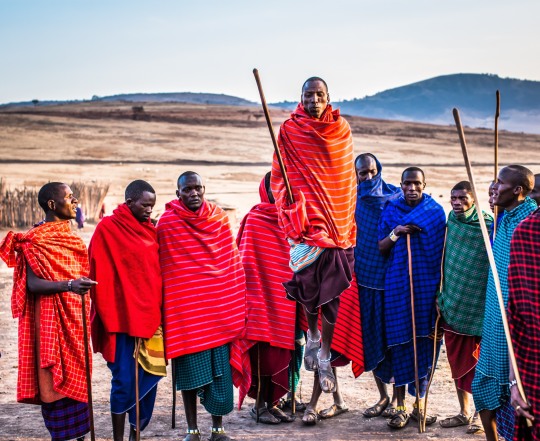
Witnessing the Great Wildebeest Migration The Maasai Mara Reserve in Kenya is synonymous with the Great Wildebeest Migration. Experience the sheer spectacle of millions of wildebeest, zebras, and gazelles crossing crocodile-infested rivers and traversing the plains in search of fresh grazing grounds. Witness thrilling predator-prey interactions and capture incredible wildlife moments in one of Africa's most iconic safari destinations.
3.2 The Kruger National Park: https://www.krugerpark.co.za/
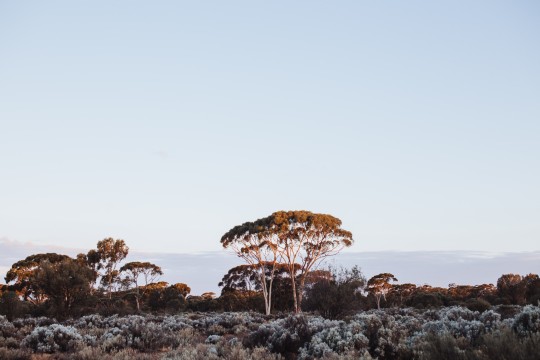
South Africa's Iconic Safari Destination The Kruger National Park in South Africa offers an unrivaled safari experience, boasting an incredible diversity of wildlife. Embark on game drives or guided walking safaris to encounter the Big Five (elephant, lion, rhino, leopard, and buffalo), along with a plethora of other species. Stay in luxurious lodges or camp under the stars, immersing yourself in the untamed beauty of the African bush.
3.3 Bwindi Impenetrable Forest: https://www.bwindiforestnationalpark.com/

Gorilla Trekking in Uganda Bwindi Impenetrable Forest in Uganda is a sanctuary for endangered mountain gorillas. Embark on a once-in-a-lifetime trek through dense foliage to encounter these majestic creatures in their natural habitat. Observe their behaviors, marvel at their intelligence, and contribute to their conservation efforts in an experience that will leave an indelible mark on your soul.
3.4 Etosha National Park:https://www.etoshanationalpark.org/

Namibia's Wildlife Wonderland Etosha National Park in Namibia is a unique safari destination known for its vast salt pans and abundant wildlife. Explore the park's diverse habitats, including the Etosha Pan, waterholes, and grassy plains, which attract a plethora of animals, including elephants, lions, giraffes, and endangered black rhinos. Capture stunning photographs against the backdrop of the stark and surreal landscapes, creating lasting memories of Namibia's wildlife wonderland.
3.5 The Okavango Delta: https://whc.unesco.org/en/list/1432/
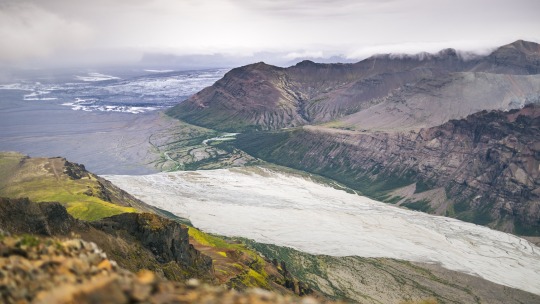
Exploring Botswana's Water Safari The Okavango Delta in Botswana is a mesmerizing oasis that supports a remarkable array of wildlife. Embark on a water safari through the winding channels and lagoons, surrounded by lush vegetation and diverse animal species. Glide silently in a mokoro, spotting elephants bathing, hippos wallowing, and colorful birdlife gracing the reeds. Immerse yourself in the tranquility of this pristine wilderness.
4: African Adventures and Activities
4.1 Victoria Falls:https://www.zambiatourism.com/destinations/waterfalls/victoria-falls/

A Thrilling Encounter with the Mighty Zambezi Victoria Falls, located on the border of Zambia and Zimbabwe, is one of Africa's greatest natural wonders. Witness the sheer power and beauty of the mighty Zambezi River as it plunges into a thundering cascade. Engage in exhilarating activities like white-water rafting, bungee jumping, or taking a scenic helicopter flight over the falls, immersing yourself in the awe-inspiring surroundings.
4.2 Sahara Desert Trekking:https://wildmorocco.com/trekking-morocco/sahara-desert-trekking/

Exploring the Dunes on Camelback Embark on an unforgettable adventure through the Sahara Desert, the epitome of exotic landscapes. Trek across the golden dunes on camelback, camping under a blanket of stars, and experiencing the solitude and grandeur of this vast desert. Engage with local nomadic communities, savor traditional cuisine, and witness mesmerizing sunrises and sunsets over the shifting sands.
4.3 Zanzibar:https://www.tripadvisor.com/Tourism-g482884-Zanzibar_Island_Zanzibar_Archipelago-Vacations.html

A Tropical Paradise with Pristine Beaches Escape to the idyllic island of Zanzibar, off the coast of Tanzania, for a dose of tropical bliss. Immerse yourself in the crystal-clear waters, pristine beaches, and vibrant coral reefs. Discover the historic Stone Town, a UNESCO World Heritage Site, with its winding alleys, spice markets, and ornate architecture. Indulge in water sports, snorkeling, or simply unwind in the laid-back island atmosphere.
4.4 Table Mountain: https://tablemountain.net/
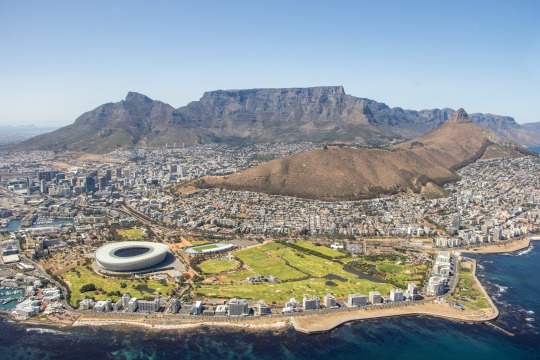
Conquering Cape Town's Iconic Landmark No visit to Cape Town, South Africa, is complete without ascending Table Mountain. Take a cable car or embark on a rewarding hike to the summit, where panoramic views of the city, coastline, and surrounding landscapes await. Explore the mountain's unique flora and fauna, and revel in the sense of accomplishment as you stand atop one of Africa's most iconic landmarks.
4.5 Nile River Cruise: https://nilecruisers.com/
Read the full article
#africa#africalist#africatop10#africatourism#africatourism2021#africatravel#africatravelguide#africavlog#africancountries#bestafricancountries#bestcountriesinafrica#bestcountriesinafricatovisit#bestcountriesvisitafrica2021#bestplacestovisitinafrica#bestplacestovisitinsouthafrica#besttouristattractionsinafrica#southafrica#southafricatourism#southafricantourism#thingstodoinsouthafrica#top10africa#top10africancountries#top10africancountriestovisit#top10bestcountriesinafrica#top10touristattractionsinafrica#tourism#tourisminafrica#tourismineastafrica#visitafrica#visitafrica2023
0 notes
Photo
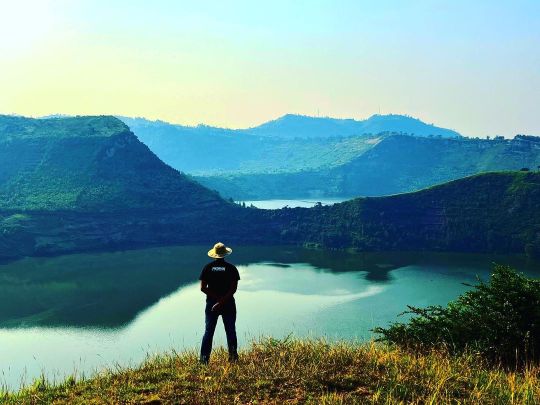
Twin lakes - #queenelizabeth national park #instagram #vacations #áfrica #africatourism #africatour #africatours #gorillaz #gorilla #tracking #instagood (at Uganda, Africa) https://www.instagram.com/p/CrhsPBIuk9I/?igshid=NGJjMDIxMWI=
#queenelizabeth#instagram#vacations#áfrica#africatourism#africatour#africatours#gorillaz#gorilla#tracking#instagood
0 notes
Text
Guinea-Bissau
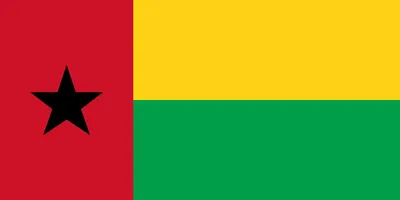
Guinea-Bissau is a small West African nation known for its beautiful landscapes, diverse cultures, and rich history. With a population of just over 2 million people and a total land area of 36,125 square kilometers, Guinea-Bissau is a country of contrasts, with scenic coastal regions, lush forests, and arid grasslands existing side by side.
The country is bordered by Senegal to the north and Guinea to the south and east, with the Atlantic Ocean on its western coastline. Its capital city, Bissau, is located in the southwest of the country and is the largest city in Guinea-Bissau.
Guinea-Bissau's name is derived from its location along the Gulf of Guinea, with "Bissau" referring to the city that serves as the country's hub of government, commerce, and culture.
The history of Guinea-Bissau is closely intertwined with the history of Portuguese colonization in Africa. Portugal first established settlements in what is now Guinea-Bissau in the mid-15th century, with the intention of establishing a trade route for gold and other precious resources.
In 1951, Guinea-Bissau became a colony within the Portuguese Empire, a status that would last until the country gained independence in 1973. Since then, Guinea-Bissau has experienced periods of political instability, economic hardship, and civil conflict, with ongoing efforts to build a stable and prosperous future for its citizens.
Guinea-Bissau's geography is characterized by its varied landscapes, which include a long and varied coastline, numerous rivers, dense forests, and wide plains. The country is known for its rich biodiversity, home to many unique and endangered species, including chimpanzees, hippos, and a wide variety of birdlife.
The country's climate is classified as tropical, with a rainy season from June to November and a dry season from December to May. Temperature ranges vary depending on the season and geographic location, with coastal regions typically experiencing higher humidity and cooler temperatures compared to the interior of the country.
Guinea-Bissau's economy is predominantly agricultural, with cashew nuts being the country's largest export. Other key exports include fish, palm oil, and rubber. Despite its abundant natural resources and potential for growth, Guinea-Bissau faces many challenges in building a strong economy, including political instability, corruption, and a lack of infrastructure.
Culture is a major aspect of life in Guinea-Bissau, with a rich and diverse range of traditions, beliefs, and practices. Dance, music, and storytelling are integral parts of the country's cultural heritage, with many unique forms of expression and artistic styles on display throughout the year.
The country is home to a diverse array of ethnic groups, each with their own languages, customs, and beliefs. The Mandinka, Fula, and Balanta are among the largest and most prominent ethnic groups in the country, with a total of over 30 different languages spoken throughout Guinea-Bissau.
Guinea-Bissau is a fascinating and vibrant nation that is well worth exploring. From its breathtaking landscapes to its rich and diverse cultures, the country offers a wealth of experiences for visitors looking to discover all that this unique part of Africa has to offer.
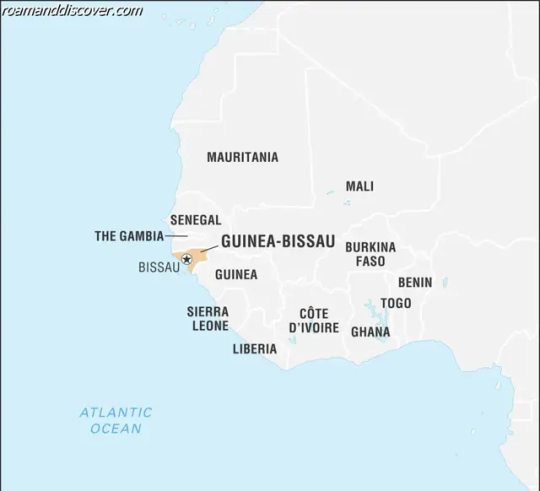
Etymology
Guinea-Bissau, officially known as the Republic of Guinea-Bissau, is a small country located on the west coast of Africa. Its name is derived from the term "Guinea," which is a general term used to refer to the west coast of Africa. The country's full name, Guinea-Bissau, is important because it distinguishes it from the neighboring country of Guinea.
It is believed that the "Bissau" in Guinea-Bissau comes from the name of a local tribe called the Bijagos. This tribe is found in the Bijagos Archipelago, which is an island chain located off the coast of Guinea-Bissau. The archipelago is made up of 88 islands, only 20 of which are inhabited. The name "Bijagos" roughly translates to "people of the islands," and it is possible that the name Bissau is a corruption of this term.
Another theory about the origins of Guinea-Bissau's name suggests that it comes from the word "vizau," which means "big river" in the Fula language. This theory is based on the fact that the Geba River is one of the largest rivers in Guinea-Bissau and is an important feature of the country's geography and culture.
Regardless of its origins, Guinea-Bissau's name is a source of pride for its people and a reminder of the country's rich history and cultural heritage.
History
Guinea-Bissau's history is complex and nuanced, shaped by centuries of colonization, rebellion, and political upheaval. The first European explorers to reach Guinea-Bissau were Portuguese traders and adventurers, who established a colonial presence in the region in the 15th century. Over the next few centuries, the Portuguese built forts, trading posts, and plantations across what is now Guinea-Bissau.
The Portuguese also brought the slave trade to Guinea-Bissau, and the region became a major hub for the trans-Atlantic slave trade. Tens of thousands of Africans were forcibly shipped from Guinea-Bissau to the Americas, and the legacy of this brutal trade is still felt across the country today.
In the late 19th and early 20th centuries, Guinea-Bissau (then known as Portuguese Guinea) experienced a series of uprisings and rebellions against Portuguese rule. These rebellions were often led by indigenous leaders who opposed Portuguese domination and sought greater control over their own lives and resources.
One of the most famous of these leaders was Amilcar Cabral, who founded the African Party for the Independence of Guinea and Cape Verde (PAIGC) in the early 1950s. The PAIGC launched a guerrilla war against Portuguese rule in the 1960s, fighting for independence and self-determination.
The PAIGC's efforts were successful, and Guinea-Bissau gained independence from Portugal in 1973. However, the post-independence period was marked by political instability, economic hardship, and continued conflict. Guinea-Bissau has experienced multiple coups and periods of authoritarian rule since gaining independence, and the country's political climate remains tense and unpredictable.
In recent years, there have been efforts to promote stability and democracy in Guinea-Bissau, and the country has held several successful elections and peaceful transitions of power. However, the challenges facing Guinea-Bissau remain significant, including poverty, corruption, and security concerns.
- 1456- Portuguese explorers reach Guinea-Bissau
- 15th-18th centuries- Portuguese establish a colonial presence in Guinea-Bissau
- 19th-20th centuries- Guinea-Bissau experiences rebellion and uprisings against Portuguese rule
- 1950s- Amilcar Cabral founds PAIGC
- 1960s- PAIGC launches guerrilla war against Portuguese rule
- 1973- Guinea-Bissau gains independence from Portugal
- 1970s and beyond- Guinea-Bissau experiences political instability and conflict
- Recent years- Guinea-Bissau holds successful elections and transitions of power
Geology
Guinea-Bissau's geology plays a significant role in shaping the country's diverse landscapes and terrain. The country is primarily composed of sedimentary rocks, with some areas of volcanic and basement rocks. There are also significant areas of unconsolidated materials such as sand and alluvium.
The geology of Guinea-Bissau has resulted in an array of formations ranging from rolling hills to broad plains and numerous rivers. There are several main geological formations in the country, including the Lower Proterozoic basement rocks, Jurassic and Cretaceous sediments, and Quaternary deposits.
The Lower Proterozoic basement rocks are found in the northeastern part of the country and consist of schists, granite gneiss, and granulites. These rocks are relatively hard and resistant to erosion, resulting in the formation of hills and rocky outcrops.
Jurassic and Cretaceous sediments are found in the northern and central parts of the country and consist of sandstones, clays, and limestones. These sediments are softer than basement rocks and, therefore, erode more easily, creating flat plains and fertile valleys.
Quaternary deposits, including alluvium and sand deposits, are found in the coastal areas and river valleys. These deposits are often unconsolidated and loose, making them susceptible to erosion by wind and water.
The country's rich and varied geology provides a base for several natural resources, including bauxite, diamonds, gold, and phosphate. Guinea-Bissau's mineral wealth has unfortunately been exploited through illegal and unregulated mining activities, leading to environmental degradation and damage to the country's landscapes.
As a result of Guinea-Bissau's geology, the country is home to diverse ecosystems, including mangrove swamps, savannah woodlands, and rainforests. These ecosystems host a wealth of flora and fauna, including a variety of endemic and endangered species.
Guinea-Bissau's geology is a crucial aspect of the country's natural landscapes and terrain. The diverse geological formations have provided a foundation for the country's ecosystems and a source of natural resources. However, the exploitation of these resources has resulted in environmental degradation and threatens the country's natural heritage.
Geography
Guinea-Bissau is a coastal country located in West Africa, bordered by Senegal to the north and Guinea to the south and east. The country is comprised of a mainland and several islands, including the Bijagos archipelago. With a land area of about 36,125 square kilometers, Guinea-Bissau is one of the smallest countries in Africa.
The most prominent physical feature of Guinea-Bissau is its coastline, which stretches for over 300 kilometers along the Atlantic Ocean. The coastal region is characterized by sandy beaches, mangrove swamps, and estuaries that support fisheries and other forms of aquatic life. The Bijagos archipelago, located off the coast, is an important breeding ground for sea turtles and other marine species.
Moving inland, Guinea-Bissau has a variety of ecosystems, including forests, savannas, and wetlands, which support a range of flora and fauna. The country's forests, which cover over 40% of its land area, are home to some of its most iconic wildlife, including chimpanzees, African elephants, and various species of primates and birds.
Guinea-Bissau is also home to several rivers, which provide an important source of freshwater for the country's inhabitants. The Geba, Corubal, and Cacheu rivers are some of the major rivers in the country. These rivers also support agriculture, fishing, and transport, and are an important part of Guinea-Bissau's economy.
In addition to its natural features, Guinea-Bissau is also home to several human-made structures, including dams, bridges, and roads. The country's infrastructure is relatively underdeveloped, however, due to a combination of factors including limited resources, political instability, and a history of colonialism and conflict.
Guinea-Bissau's geography is characterized by its diverse natural landscapes, rich biodiversity, and significant coastal resources. Given its small size and relatively low population density, the country is a unique and valuable part of West Africa's geography.
Ecology
Guinea-Bissau boasts a diverse range of ecological systems, from its coastline and forests to rivers and savannas. This varied environment supports a wealth of plant and animal species, many of which are endemic to the region.
One of the most prominent features of Guinea-Bissau's ecology is its coastline, which stretches for over 350 kilometers along the Atlantic Ocean. The country's mangrove forests, found in coastal areas and estuaries, are particularly important for supporting marine biodiversity. These fragile ecosystems are home to a variety of fish and shellfish species, including shrimp, crabs, and oysters.
The country's interior is dominated by savannas, which make up over half of its land area. These grasslands are home to an array of wildlife, including African elephants, giraffes, and antelopes. Guinea-Bissau is also home to several national parks and reserves, such as the Cantanhez Forest National Park, which is renowned for its chimpanzee population.
The country's rivers and wetlands are also important for supporting biodiversity. The Geba and Corubal rivers are major sources of fish for the local population, while the Bijagós Islands are home to a diverse array of reptiles, birds, and mammals.
Guinea-Bissau's unique ecology is also threatened by a variety of environmental risks, including deforestation, soil erosion, and overfishing. The country has implemented several initiatives to protect its biodiversity, such as the Bijagós Archipelago Biosphere Reserve, which aims to balance conservation efforts with sustainable development practices.
- Biodiversity: Guinea-Bissau is home to over 1000 plant species and 2000 animal species, including African forest elephants, chimpanzees, hippos, and manatees.
- Deforestation: Like many countries in West Africa, Guinea-Bissau has experienced high rates of deforestation due to agricultural expansion, fuelwood collection, and timber extraction.
- Sustainable development practices: The government has implemented several initiatives to promote sustainable development practices in the country's major economic sectors, such as agriculture and fisheries.
Guinea-Bissau's ecology is incredibly diverse and supports a rich array of plant and animal species. While the country faces several environmental challenges, it has taken significant steps to protect its natural heritage and promote sustainable development practices.
Biodiversity
Guinea-Bissau prides itself on its extensive biodiversity, being home to a plethora of animal and plant species. Due to its diverse range of ecosystems, including forests, wetlands, and savannas, it is a biodiversity hotspot – a region with high levels of species richness and endemism that is also under threat from human activities.
The country is one of the few places in Africa where one can find the rare saltwater hippopotamus. Also known as the West African hippopotamus, this unique herbivore can weigh in at 2,000 kg and has been listed as a Vulnerable species by the IUCN.
Another notable animal species found in Guinea-Bissau is the West African manatee. These gentle giants can weigh up to 600 kg and are found in the country's estuaries, mangroves, and lagoons. Other typical mammal species include antelopes, chimpanzees, and hyenas.
The avian biodiversity of Guinea-Bissau is also exceptional. The country is an important habitat for several bird species, with over 455 species recorded in the country’s Important Bird Areas (IBA). These include the white-breasted guinea fowl, the Bannerman’s turaco, Gundlach’s hawk-eagle, among others.
In terms of plant biodiversity, Guinea-Bissau boasts a wide variety of medicinal plants, some of which are used in traditional medicine. It is also home to the Kapok (Ceiba pentandra), a massive tree species that can grow up to 70 meters tall.
Unfortunately, like much of the biodiversity in the world, Guinea-Bissau’s species are under threat from human activities. The country's forests have been significantly degraded, and uncontrolled hunting and poaching of wildlife are rampant. The addition of invasive species is also a significant threat to the country's delicate ecosystems.
Efforts are being made by the government and conservation organizations to address these issues. The Ministry of Environment and Biodiversity is working with other organizations to create new protected areas and strengthen existing ones. Wildlife surveillance programs are being implemented to combat poaching, and local communities are being engaged to work towards sustainable use of natural resources.
Guinea-Bissau's biodiversity is both a significant asset and a responsibility. By maintaining and safeguarding its unique collection of species, the country can contribute to global efforts to conserve biodiversity and ensure a healthy planet for future generations.
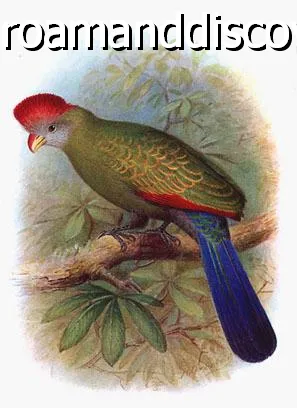
Bannermans Turaco
Climate
Guinea-Bissau experiences a tropical and humid climate that is greatly influenced by the presence of the Atlantic Ocean. The weather patterns in Guinea-Bissau can be described as alternating between dry and rainy seasons. The dry season typically lasts from December to April while the rainy season starts from May and extends through to November.
Guinea-Bissau experiences a high amount of rainfall throughout the year, with an average annual rainfall of between 1,000 to 1,500 millimeters. The heaviest rainfall is usually experienced between June and August, with the Bijagos islands recording the highest amount of rainfall in the country.
The temperatures in Guinea-Bissau are relatively hot and humid throughout the year. The average temperature in the country ranges between 24°C to 30°C, with the highest temperatures being experienced in April and May.
The coastal regions of Guinea-Bissau experience cooler average temperatures compared to the rest of the country due to its proximity to the Atlantic Ocean. The warm ocean currents also help to regulate the temperature in the coastal regions.
In terms of climate zones, Guinea-Bissau can be divided into three main zones - the coastal zone, the savannah zone, and the Sudan zone. The coastal zone experiences a tropical maritime climate while the savannah and Sudan zones experience a tropical savanna climate with distinct dry and wet seasons.
During the rainy season, Guinea-Bissau is susceptible to flooding due to the heavy rains. This poses a significant challenge to the country's infrastructure and affects the livelihoods of its people. In recent years, the country has been taking measures to mitigate the effects of climate change by investing in flood control measures and developing climate-resilient infrastructure.
Guinea-Bissau's tropical and humid climate makes it an ideal destination for those seeking a warm and sunny vacation. Its diverse climate zones provide visitors with a varied experience, from the cool coastal regions to the hot and humid savannah zone. However, visitors should plan their trip according to the season to avoid the heavy rains and flooding that may occur during the rainy season.
Environmental Issues
Guinea-Bissau faces various environmental challenges that threaten its natural resources, wildlife, and the health of its citizens. Deforestation, soil degradation, overfishing, and illegal wildlife trade are among the major environmental issues faced by the country. Some of these issues are caused by human activities such as logging for timber and charcoal production, slash-and-burn agriculture, and unregulated fishing practices, while others are natural disasters such as floods, droughts, and land erosion.
Read the full article
0 notes
Text
Morgan Heritage announces Island Vibes Africa Tour

Morgan Heritage Announces World's First Full African Scale Tour, which will kick off on October 2 in Johannesburg, South Africa. #morganheritage africatour #reggaelegends #livereggae #southafrica #islandvibesafricatour
Read the full article
0 notes
Video
Best Africa safaris tour pack list for great adventures? Follow and read through the Article for the best Africa Travel Advice. Travel with Deks Safaris & Tours Africa. https://www.dekstours.com/africa-safari-news/what-to-bring-on-safari-in-africa/ #Africatours #Africatour #africasafari #Africadiscoverytours #Africasafaris #Africaadventuretours #Africavacationholidays #DeksSafaris&ToursAfrica Email: [email protected] Call: +256 759 352490 WhatsApp: +256 752 180468 (at Deks Safaris & Tours Ltd) https://www.instagram.com/p/Cgou1v-qgEu/?igshid=NGJjMDIxMWI=
#africatours#africatour#africasafari#africadiscoverytours#africasafaris#africaadventuretours#africavacationholidays#dekssafaris
0 notes
Text
#southafrica #africanstartup #africandescent #southafricanartist #southafricanart #africanstyle #tourism #whitelion #whitelionrecords #adventurelifestyle #banarasichhorasuchhikumar #africanexcellence #africanamerican #exploresouthafrica #africatour #capetownsouthafrica #capetownproperty #traveling #hotel #holiday #suchhikumarmodelactor #southafricanblogger #africanblogger #viralvideochallenge� #videooftheday #actorsofinstagram
0 notes
Photo
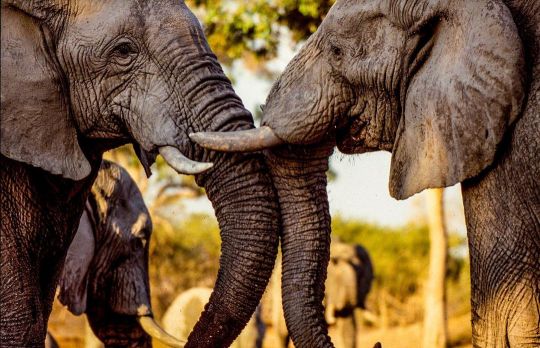
Happy Africa Day to all of you 🌍 #africaday #africa #africatourism #africananimals #afrika #africalove #saveafrica #africatravels #celebrateafrica #elephanttrunk #elephantkiss #elephantsofinstagram #elephantlove #africanamazing #áfrica #africatravel #travelafrica #travel #seetheworld #exploreearth #explore https://www.instagram.com/p/Cd_TIXpsONs/?igshid=NGJjMDIxMWI=
#africaday#africa#africatourism#africananimals#afrika#africalove#saveafrica#africatravels#celebrateafrica#elephanttrunk#elephantkiss#elephantsofinstagram#elephantlove#africanamazing#áfrica#africatravel#travelafrica#travel#seetheworld#exploreearth#explore
8 notes
·
View notes
Photo

Who can relate? What African country do you want to visit the most ? 🤩 . . . . #checkoutafrica #africatravel #africatravel #africahiddengems #travelafrica #africavacation #exploreafrica #africatourism https://www.instagram.com/p/CXvX_5QL2le/?utm_medium=tumblr
#checkoutafrica#africatravel#africahiddengems#travelafrica#africavacation#exploreafrica#africatourism
10 notes
·
View notes
Photo
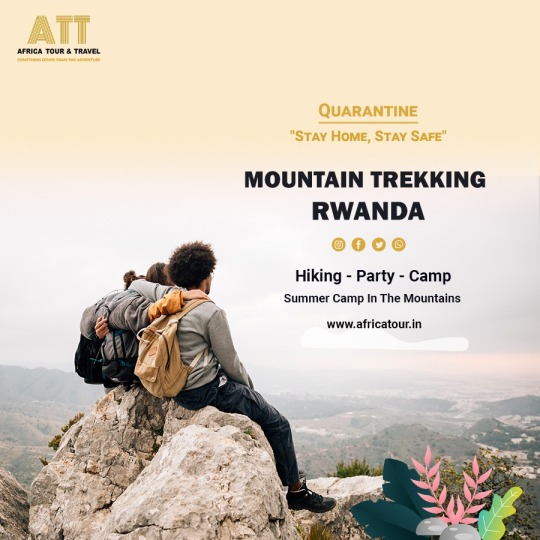
Want to go for a hiking, party, and camp? Africa Tour offers you the best package in Rwanda.
More packages at www.africatour.in
WhatsApp:- +91-9810312400
Call:- +91-9599418544
#rwanda#uganda#tanzania#mountain#party#camp#camping#hiking#trekking#tour#trip#travel#vacation#holidays#aftereffects#africatourism#photos#photography#summercamp#package
1 note
·
View note
Photo
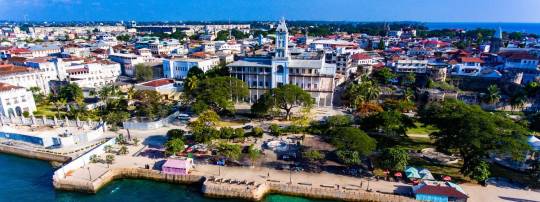
Tourism in Africa - Explore Africa’s breathtaking natural beauty and enjoy its golden deserts, pristine beaches, tropical jungles, and incredible wildlife on your next holiday. Visit Holidays by flydubai to book flights, hotels, activities and more for less.
Africa Travel Guide - Tourism in Africa - Holidays by flydubai
1 note
·
View note
Photo

#HelloFrom the island of Bohuslän, Sweden. We are dreaming of taking in the view of these tightly knit houses from the northernmost part of the country’s west coast. cv @instagram Photo by @airpixels . . . . 🚩Drop your comment👇🏿 #CBE Rate this 1 - 10 and the best Emoji 🛸 #Trending #crazybeatsent #whatstrending . . . . . . . ———————————————— . 🔌 Entertainment to the World🗺 Remember to follow this page for more update @cbeworldwidee for FREE Promo 🔌 ➕ Advert..📡, #cbeworldwidee #cbeworldwide Managed by @Lmmedia_ 📶 . #djiglobal #beach #nature #jardin #beautifuldestinations #thisisafrica #beautifuldestination #djiafrica #visiterlafrique #paradise #cotedivoire #africanbeauty #africatourism #landscape #africanamazing #africatourism #djiglobal #beach #visiterlafrique #paradise #cotedivoire #africanbeauty #africatourism #paysage #landscape #africanamazing #arealphotography #dynamicafrica #africanbeauty #visitafrica #cotedivoire #blackvoyageurs #aventure #photographie #africatourisme https://www.instagram.com/p/CH6ZrQfHieC/?igshid=i918v9y8ze3h
#hellofrom#cbe#trending#crazybeatsent#whatstrending#cbeworldwidee#cbeworldwide#djiglobal#beach#nature#jardin#beautifuldestinations#thisisafrica#beautifuldestination#djiafrica#visiterlafrique#paradise#cotedivoire#africanbeauty#africatourism#landscape#africanamazing#paysage#arealphotography#dynamicafrica#visitafrica#blackvoyageurs#aventure#photographie#africatourisme
0 notes
Text
Luxury Safari Holidays In South Africa
Exploring the wild of Africa is a must for adventure travelers. Come and see an unforgettable experience through our luxury safari tours that include keepers camps and resort lodges, with luxury and comfort. Interacting with the animals and people of Africa is the surest way to get the adventure trip of a lifetime. Don't miss the chance to breathe in the soul of Africa.
1 note
·
View note
Photo

Cocody riviéra 2 🌍 ABIDJAN-Côte d’Ivoire 🇨🇮 📸 @visitercotedivoire . 🧡#djiglobal #beach #nature #jardin #beautifuldestinations #thisisafrica #beautifuldestination #djiafrica #visiterlafrique #paradise #cotedivoire #africanbeauty #africatourism #ivorycoast #landscape #africanamazing #africatourism #ivorycoast #djiglobal #beach #visiterlafrique #paradise #cotedivoire #africanbeauty #africatourism #paysage #landscape #africanamazing #arealphotography #dynamicafrica #africanbeauty #visitafrica #cotedivoire #blackvoyageurs #aventure #photographie #africatourisme #travelafrica #sicilianelcuore #travelphotography #travelafrique #afficheivoirienne (à Côte d'Ivoire) https://www.instagram.com/p/CHp8qfFpRnZ/?igshid=dtvhy4gsa4jw
#djiglobal#beach#nature#jardin#beautifuldestinations#thisisafrica#beautifuldestination#djiafrica#visiterlafrique#paradise#cotedivoire#africanbeauty#africatourism#ivorycoast#landscape#africanamazing#paysage#arealphotography#dynamicafrica#visitafrica#blackvoyageurs#aventure#photographie#africatourisme#travelafrica#sicilianelcuore#travelphotography#travelafrique#afficheivoirienne
0 notes
Photo
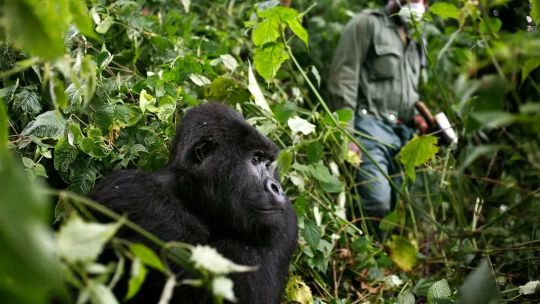
Best Africa safaris tour pack list for great adventures? Follow and read through the Article for the best Africa Travel Advice. Travel with Deks Safaris & Tours Africa. https://www.dekstours.com/africa-safari-news/what-to-bring-on-safari-in-africa/ #Africatours #Africatour #africasafari #Africadiscoverytours #Africasafaris #Africaadventuretours #Africavacationholidays #DeksSafaris&ToursAfrica Email: [email protected] Call: +256 759 352490 WhatsApp: +256 752 180468 (at Deks Safaris & Tours Ltd) https://www.instagram.com/p/CgoswNcIm6d/?igshid=NGJjMDIxMWI=
#africatours#africatour#africasafari#africadiscoverytours#africasafaris#africaadventuretours#africavacationholidays#dekssafaris
0 notes